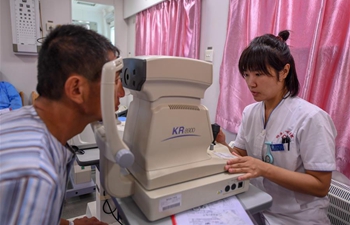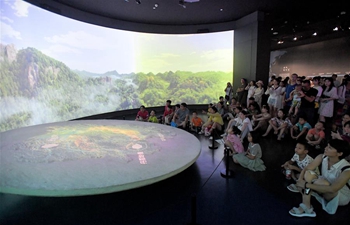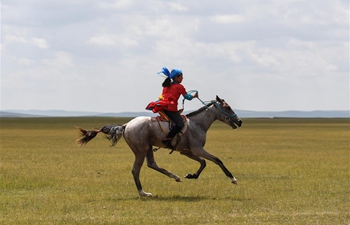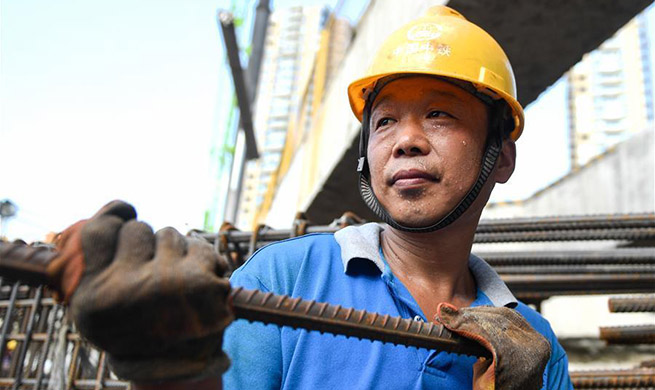WASHINGTON, July 24 (Xinhua) -- The U.S. engineers developed a robotic arm with fingers that can mimic the way a human hand feels objects by sending signals to the brain.
The study published on Wednesday in the journal Science Robotics described the prosthetic arm that not only can move, they can move with his thoughts.
The team led by researchers from the University of Utah allows the robotic arm to tap into the wearer's nerves with a bundle of 100 microelectrodes and wires that are implanted in the forearm.
An amputee wearing the prosthetic arm can sense the touch of something soft or hard, understand better how to pick it up, and perform delicate tasks that would otherwise be impossible with a standard prosthetic with metal hooks or claws for hands, according to the study.
"We changed the way we are sending that information to the brain so that it matches the human body. And by matching the human body, we were able to see improved benefits," said Jacob George, co-author of the research and a biomedical engineering doctoral student of the university. "We're making more biologically realistic signals."
The arm is made of mostly metal motors and parts with a silicon "skin" over the hand and is powered by an external battery and wired to a computer outside the body.
The wiring bundle can interpret the signals from the still-remaining arm nerves, and the computer translates them to digital signals that tell the arm to move, according to the study.
Also, the prosthetic hand works the other way by learning with sensors how to "feel" the object in order to know how much pressure to exert.
Upon first contact of an object, a burst of impulses runs up the nerves to the brain and then tapers off, so the researchers need to adapt the robotic arm to make it biologically realistic.
They used mathematical calculations along with recorded impulses from a primate's arm to create an approximate model of how humans receive these different signal patterns.
Keven Walgamott, a real estate agent from West Valley City, Utah, and one of seven test subjects at the University of Utah, was able to pluck grapes without crushing them, pick up an egg without cracking it, and hold his wife's hand with a sensation in the fingers similar to that of an able-bodied person.
"One of the first things he wanted to do was put on his wedding ring. That's hard to do with one hand," said Gregory Clark, a biomedical engineering associate professor of the university who led the team. "It was very moving."
The team is now working to develop a portable version that connected wirelessly, giving the wearer complete freedom.













